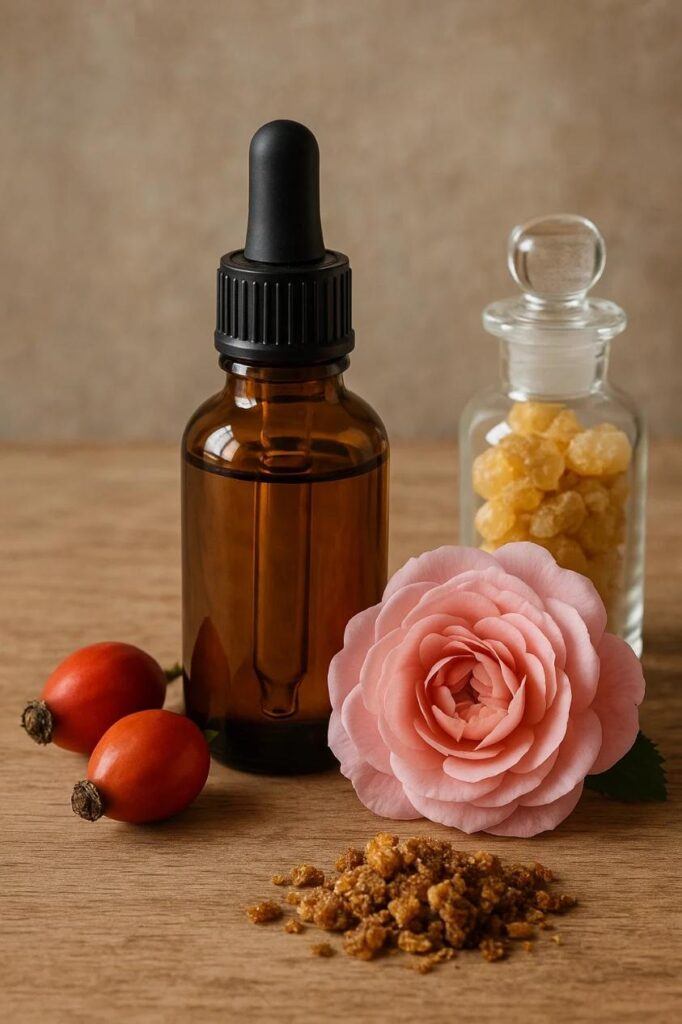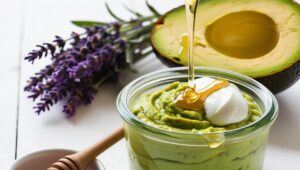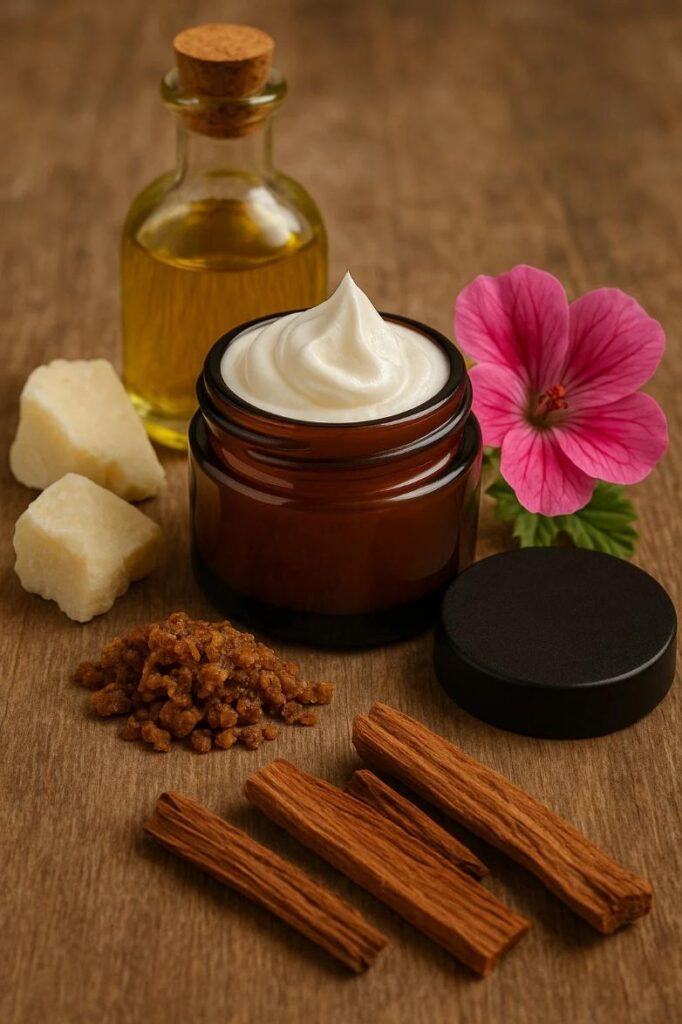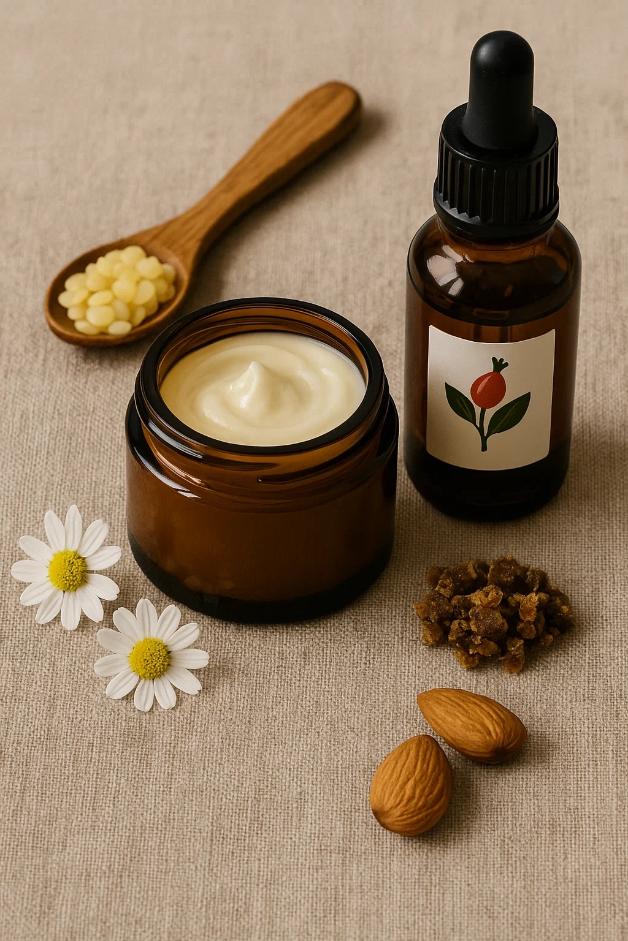Propolis has been a buzzword in the beauty community, and for a good reason. Historically, it’s been used for its medicinal properties, dating back to ancient civilisations like the Egyptians and Greeks who swore by its healing powers. Since those times we have discovered a lot about the unique properties packed into this natural marvel. So, how can using propolis for mature skin be benefitial?
Anti-Aging Benefits of Propolis
Propolis stands out in the fight against aging primarily due to its powerhouse of antioxidants. These helpful little compounds work tirelessly to mitigate oxidative stress, the unseen enemy that speeds up skin aging. It’s like giving your skin a secret weapon against fine lines.
An impressive aspect of propolis is its potential to smooth out wrinkles. Studies have shown that propolis can contribute to skin cell regeneration, which is crucial for maintaining skin’s elasticity and firmness. This regeneration process is key for mature skin, helping to boost collagen production and promoting an overall more vital appearance. Plus, propolis has anti-inflammatory properties, which can soothe irritated or sensitive skin often experienced as we age.
Hydration is another trick up propolis’s sleeve. Mature skin often battles with dryness, and propolis naturally keeps moisture locked in. This hydrating ability not only nourishes but also gives the skin a more youthful, dewy appearance.
Its gentle nature means it’s suitable for most skin types, making it an excellent option for those with mature skin looking for a natural approach to anti-aging. However, always keep an eye on how your skin reacts, as some may have specific sensitivities.
Incorporating Propolis into Your Skincare Routine
Here are 4 nourishing skincare recipes tailored for mature skin, incorporating propolis for its regenerative, anti-inflammatory, and antioxidant properties. These recipes are designed to hydrate, repair, and rejuvenate aging skin.
#1. Propolis and Rosehip Anti-Aging Serum
Purpose
A powerful serum that targets fine lines, wrinkles, and age spots, while deeply nourishing the skin.
Ingredients
- 2 tablespoons rosehip oil (rich in vitamins A and C, ideal for mature skin)
- 1 tablespoon argan oil (known for its moisturising and anti-aging properties)
- 1 teaspoon propolis tincture (or propolis oil)
- 5 drops frankincense essential oil (promotes cell regeneration)
- 5 drops rose essential oil (for added hydration and anti-aging benefits)

How to Make
- Combine ingredients: in a small dark glass bottle, combine the rosehip oil, argan oil, and propolis tincture.
- Add essential oils: add the frankincense and rose essential oils.
- Mix and store: cap the bottle and shake well to mix. Store in a cool, dark place.
Usage
Apply 3-5 drops to your face and neck after cleansing and toning, morning and night. Gently massage into the skin using upward motions.
#2. Propolis and Avocado Rejuvenating Face Mask
Purpose
This hydrating and nourishing face mask deeply moisturises, softens, and revitalises mature skin.

Ingredients
- ½ ripe avocado (rich in fatty acids and vitamins for deep hydration)
- 1 tablespoon honey (for moisture and soothing properties)
- 1 teaspoon propolis tincture
- 1 tablespoon plain yogurt (contains lactic acid for gentle exfoliation)
- 5 drops lavender essential oil (for added relaxation and skin repair)
How to Make
- Mash the avocado: in a small bowl, mash the avocado until smooth.
- Mix ingredients: add the honey, propolis tincture, yogurt, and lavender essential oil. Mix until well combined.
- Apply to face: apply the mask evenly to cleansed skin, avoiding the eye area.
- Leave on: let the mask sit for 15-20 minutes.
- Rinse off: rinse with lukewarm water and pat your face dry with a soft towel.
Frequency
Use 1-2 times per week for best results.
#3. Propolis and Shea Butter Night Cream
Purpose
A rich, nourishing night cream that helps repair and rejuvenate mature skin overnight.
Ingredients
- 2 tablespoons shea butter (deeply moisturising and rich in vitamins A and E)
- 1 tablespoon jojoba oil (balances the skin’s natural oils and is easily absorbed)
- 1 teaspoon propolis tincture (or propolis oil, for its healing and anti-inflammatory properties)
- 5 drops geranium essential oil (promotes skin elasticity and reduces the appearance of wrinkles)
- 5 drops sandalwood essential oil (soothes and rejuvenates the skin, ideal for mature skin)

How to Make
- Melt the shea butter: in a double boiler, gently melt the shea butter over low heat until it becomes a smooth liquid. Avoid overheating to preserve the nutrients.
- Add jojoba oil: once the shea butter is melted, remove it from the heat and stir in the jojoba oil until well combined.
- Mix in propolis and essential oils: allow the mixture to cool slightly before adding the propolis tincture. Then, add the geranium and sandalwood essential oils. Stir well to ensure all ingredients are fully incorporated.
- Cool and whip: let the mixture cool to room temperature or place it in the refrigerator for a few minutes until it begins to solidify. Once it starts to thicken, whip it with a hand mixer or a small whisk until it reaches a creamy consistency.
- Store in a jar: transfer the whipped night cream into a clean glass jar with a lid. Store in a cool, dark place.
Usage
Apply a small amount to your face and neck every night after cleansing and toning. Gently massage into the skin using upward motions. This night cream is especially beneficial for dry, mature skin.
#4. Propolis and Rosehip Oil Eye Cream
Purpose
A gentle and nourishing eye cream designed to hydrate and reduce the appearance of fine lines and dark circles around the eyes.

Ingredients
- 1 tablespoon rosehip oil (rich in essential fatty acids and vitamins, ideal for delicate skin around the eyes)
- 1 tablespoon sweet almond oil (soothing and helps to reduce puffiness)
- 1 teaspoon beeswax pellets (to give the cream a firmer texture)
- ½ teaspoon propolis tincture (or propolis oil, for its anti-inflammatory and healing properties)
- 3 drops chamomile essential oil (soothes irritation and reduces dark circles)
How to Make
- Melt the beeswax: in a double boiler, gently melt the beeswax pellets over low heat.
- Add oils: once the beeswax is melted, add the rosehip oil and sweet almond oil to the mixture. Stir until fully combined.
- Incorporate propolis and essential oils: remove the mixture from the heat and allow it to cool slightly before adding the propolis tincture. Stir in the chamomile essential oil and mix thoroughly.
- Cool and set: pour the mixture into a small, clean jar and let it cool to room temperature. The beeswax will help the cream set into a semi-solid consistency.
- Store: store the eye cream in a cool, dark place. Use within 6 months for best results.
Usage
After cleansing your face, gently dab a small amount of the eye cream around the eyes using your ring finger. Use morning and night to help reduce fine lines, puffiness, and dark circles.
Finding the right propolis-infused product can transform your skincare approach. The market offers a wide range of creams, serums, and masks. It’s important to pick products that highlight propolis among their active ingredients to ensure benefits.
For those who enjoy a DIY approach, consider adding propolis extract to your homemade skincare recipes. Pair it with ingredients like honey or yogurt for a soothing mask that targets dryness and promotes hydration.
Generally, propolis works well with most skin types, but it shines with dry and sensitive skin, thanks to its moisturising and calming effects. That being said, a patch test before fully incorporating it is always a wise move. This helps you avoid any unexpected reactions.
Applying propolis products correctly boosts their effectiveness. Typically, after cleansing and toning, apply a propolis serum, and then follow with your usual moisturiser. This sequence helps lock in the beneficial properties of propolis, keeping your skin rejuvenated throughout the day.
Don’t hesitate to mix and match different products, aiming for a routine that responds to your skin’s unique needs while fully utilising propolis’s potential.
Propolis Safety, Allergies, and Considerations
Before diving into any new skincare regimen, especially one involving potent natural ingredients like propolis, it’s crucial to understand potential safety concerns. While propolis is generally safe for most, it can cause allergic reactions, especially for those allergic to bee products.
Identifying an allergy is best done with a patch test. Apply a small amount of the product containing propolis to your inner wrist or elbow and wait 24 hours. If redness, itching, or swelling occurs, it’s a sign that propolis might not be suitable for you.
For those with sensitive skin, starting slowly and observing any changes is key. Even though propolis has anti-inflammatory properties, reactions can vary, and some might experience mild irritation.
Ethical considerations also matter. Ensure that the propolis in your products comes from sustainable and eco-friendly sources. This supports bee populations and the environment, protecting this valuable resource for future use.
